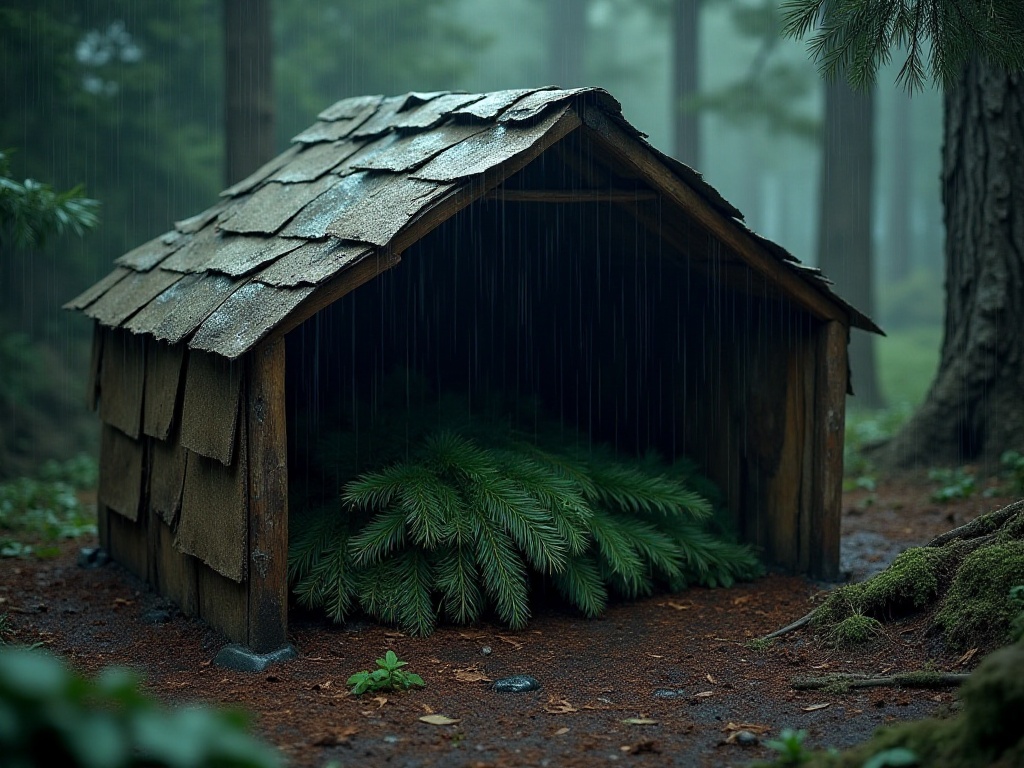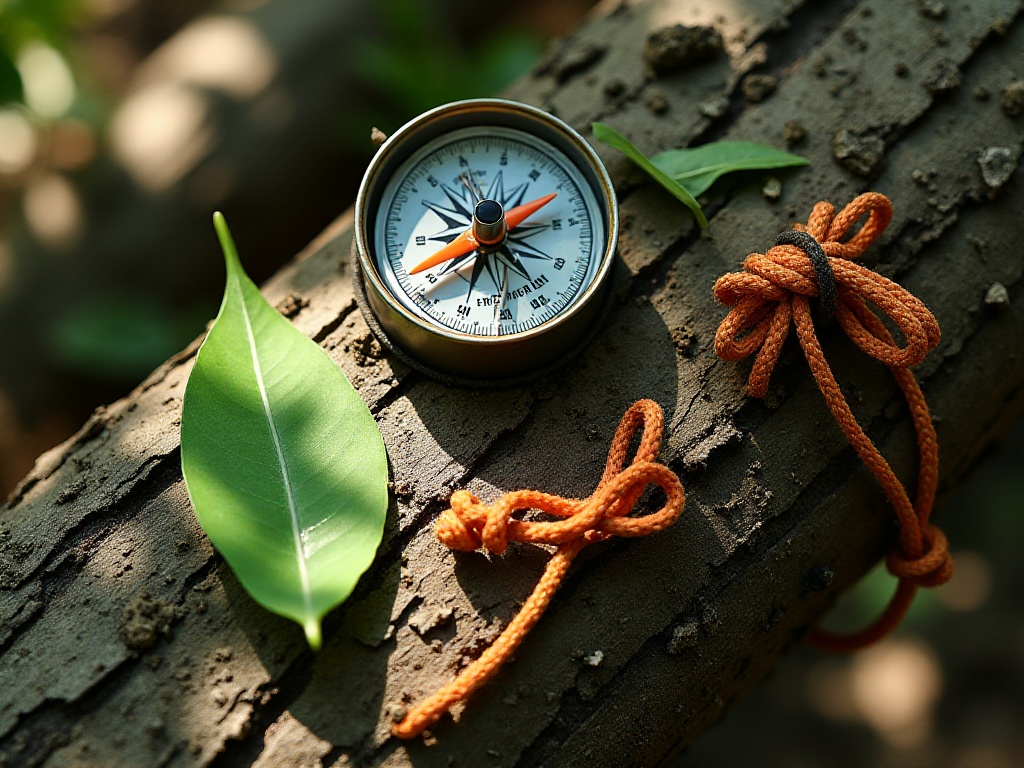Opening Chat
Hi everyone, I'm Little K, a post-95s outdoor sports enthusiast. Today I want to share with you my amazing discoveries from five years of wilderness adventures. Though I'm young, I'm quite an experienced outdoorsman. Honestly, the thing I most want to recommend isn't those thousand-dollar pieces of gear, but rather a simple yet magical tool - duct tape. Yes, the same waterproof tape we use to seal shipping boxes.
Introduction to This Magic Tool
Whenever I post my outdoor gear on social media, friends always ask: "Hey, why do you always have duct tape in your gear list?" To be honest, I didn't understand at first either. It took me a long time learning from the veterans in outdoor groups to grasp its essence. Now when introducing beginners, I always teach them about this treasure box first.
You might think I'm exaggerating, but I'm really not. Just take last summer as an example - when I took a group of outdoor newbies camping, one roll of duct tape helped us resolve at least 5 crises. That experience made me determined to properly summarize the usage techniques of this magical tool.

Equipment Repair
Speaking of repairs, I have plenty of experience. Once, a girl in our team was wearing imported hiking boots worth nearly 2000 yuan, but the sole started coming off halfway through. She was really worried that the hike would be ruined. Without hesitation, I pulled out my duct tape, wrapped it around a few times, and amazingly, she managed to complete a full day's hike in these "modified" boots, even on steep slopes full of loose rocks.
An even more dramatic incident occurred when we were camping at 3000+ meters altitude. It started raining at night, and a team member frantically reported their tent was leaking. We found that something had punctured a small hole in the waterproof layer. In the past, this would have meant a failed camping trip. But with duct tape, it was different - I immediately applied tape on both sides, and not only did it stop leaking then, but the patch is still holding up now.
Last winter was even more impressive - a friend's zipper on his down jacket broke when it was below minus ten degrees outside. I made a temporary zipper fix with duct tape, which not only blocked the wind effectively but lasted until the end of the activity. He later joked that he didn't even want to buy a new one because the tape version worked better than the original.

Medical Applications
The medical applications of duct tape are truly eye-opening. Last summer, one of our team members got a 7-8 centimeter cut on his arm from a sharp branch while crossing through brush. We were deep in the mountains, four hours away from the nearest medical point, and worse yet, our first aid kit's bandages weren't big enough.
In this emergency, I immediately disinfected with alcohol spray, covered the wound with clean gauze, and secured it with duct tape. Honestly, I was a bit worried about this temporary dressing. But this simple bandaging turned out to be completely waterproof and dustproof, and very stable, allowing that member to continue hiking. Most amazingly, when we reached the medical point, the doctor gave us a thumbs up, saying our bandaging method was very professional and the wound showed no signs of inflammation.
Another time, a team member developed a blister on their foot and was in pain while walking. I made a protective ring around the blister with duct tape, leaving space in the middle to avoid pressure on the blister, and secured the outer ring with tape. This makeshift solution actually allowed them to complete the entire journey, and even the doctor praised this treatment method as professional.
Survival Skills
In outdoor survival, duct tape is truly omnipotent. What amazed me most was its fire-starting ability. Once during continuous rainy weather, all firewood was soaked. I had a sudden inspiration and crumpled duct tape into a ball - it burned for nearly 5 minutes when lit. This was enough time to dry and ignite the damp firewood. This trick has since become an essential skill I teach to camping newcomers.
When it comes to building temporary shelters, duct tape has been a huge help. Last winter while hiking in Northeast China, we encountered an unexpected blizzard. The weather forecast hadn't warned of this at all, and we had to quickly find shelter. After finding a windproof hillside, I led the team in cutting some branches for the frame and used duct tape to secure a waterproof tarp to it. In less than half an hour, we had a sturdy temporary tent. Most amazingly, this temporary shelter survived an entire night of blizzard.
Another time, we got lost in a valley and needed to leave markers for the rescue team. I made arrow marks with duct tape on prominent trees - these markers were both visible and waterproof, and successfully guided the rescue team to us.
Storage Methods
Regarding storage methods, I've learned through countless failures. At first, I just threw a roll of tape into my backpack, but it either got deformed or was hard to find. Then I had a brilliant idea: wrapping the tape around water bottles or trekking poles.
Now my standard configuration is: 15 meters of waterproof tape on trekking poles, 20 meters on water bottles, and a small spare roll in the backpack side pocket. This distributed storage not only balances weight but ensures quick access in different situations. Plus, tape wrapped around cylindrical objects is especially easy to tear, avoiding the awkward situation of not finding the end.
Once during a rainy day, I saw a veteran wrap tape around a waterproof flashlight, ensuring the tape stayed dry even in heavy rain. I borrowed this trick, and it works really well.

Purchasing Advice
People often ask me: "There are so many types of tape on the market, which should I buy?" Honestly, I've made plenty of mistakes too. Cheap tape easily comes unstuck, while expensive ones seem wasteful. After years of experience, I have some practical suggestions.
First, waterproofing is essential. I once bought tape claimed to be waterproof, but it dissolved in water and nearly caused disaster. Now I always test by running water over it for a while to check waterproofing. Second, width should be between 4.8 to 5.2 centimeters - this range is most practical. Too narrow lacks strength, too wide is hard to handle.
Most importantly, adhesion should be moderate. Extremely sticky tape might hold well but is hard to tear, which is troublesome in outdoor emergencies. Also, some very sticky tapes leave difficult-to-clean residue. I recommend choosing products that can be easily torn by hand but still stick well enough.
Price-wise, I think products around 50-80 yuan per roll are good enough. I've tested many brands and found tapes in this price range meet all needs. There's no need to buy those costing 200-300 per roll, as outdoor use conditions are complex and you won't feel bad about disposing of it after use.

Field Experience Summary
Last summer's experience in Arxan brought my reverence for duct tape to a peak. That hiking trip lasted 7 full days, during which this roll of tape was like a treasure chest.
On the first day, a teammate's backpack strap broke, and I wrapped it with tape as a replacement strap. On the third day, heavy rain bent our tent poles, and tape came to the rescue again, making the tent stable as a mountain after reinforcement. By the fifth day, we wanted to fish by the river but had no fishing gear. I had a sudden inspiration and made a makeshift fishing rod holder with some branches and tape - we actually caught several fish.
Most amazingly, on the last day, a teammate's quick-dry pants got a big hole, which was quite embarrassing, but I made a temporary patch with tape on both sides. This solution not only solved the problem but gave everyone a good laugh.

Closing Reminder
After so many wilderness experiences, I increasingly feel that true outdoor expertise isn't about having expensive gear, but about solving complex problems with the simplest tools. Duct tape is the perfect example - ordinary yet crucial in key moments.
Now before every trip, I repeatedly check: Did I pack the tape? Did I pack the spare? Because I know this small item might become a lifesaver at some point.
Outdoor activities are always full of unknowns and challenges, but with proper preparation, many seemingly difficult problems can be easily solved. I hope my experiences can help more outdoor enthusiasts. If you have unique experiences with using duct tape, welcome to share them in the comments section so we can learn from each other.







